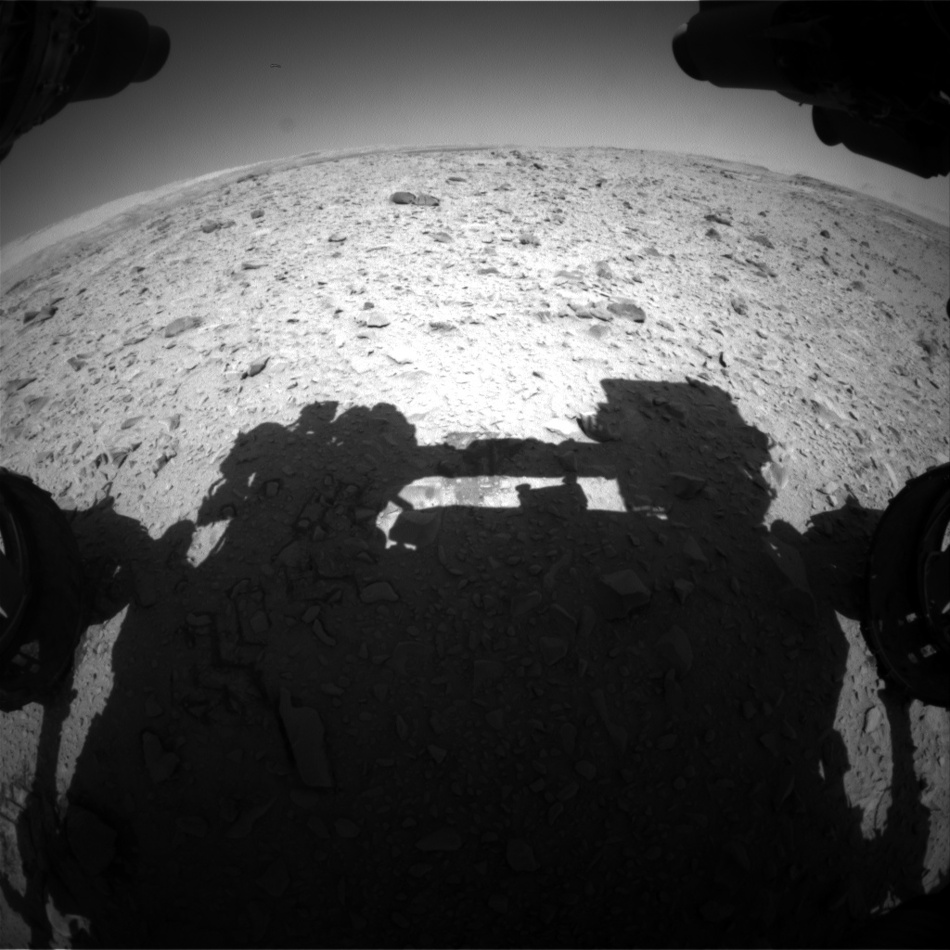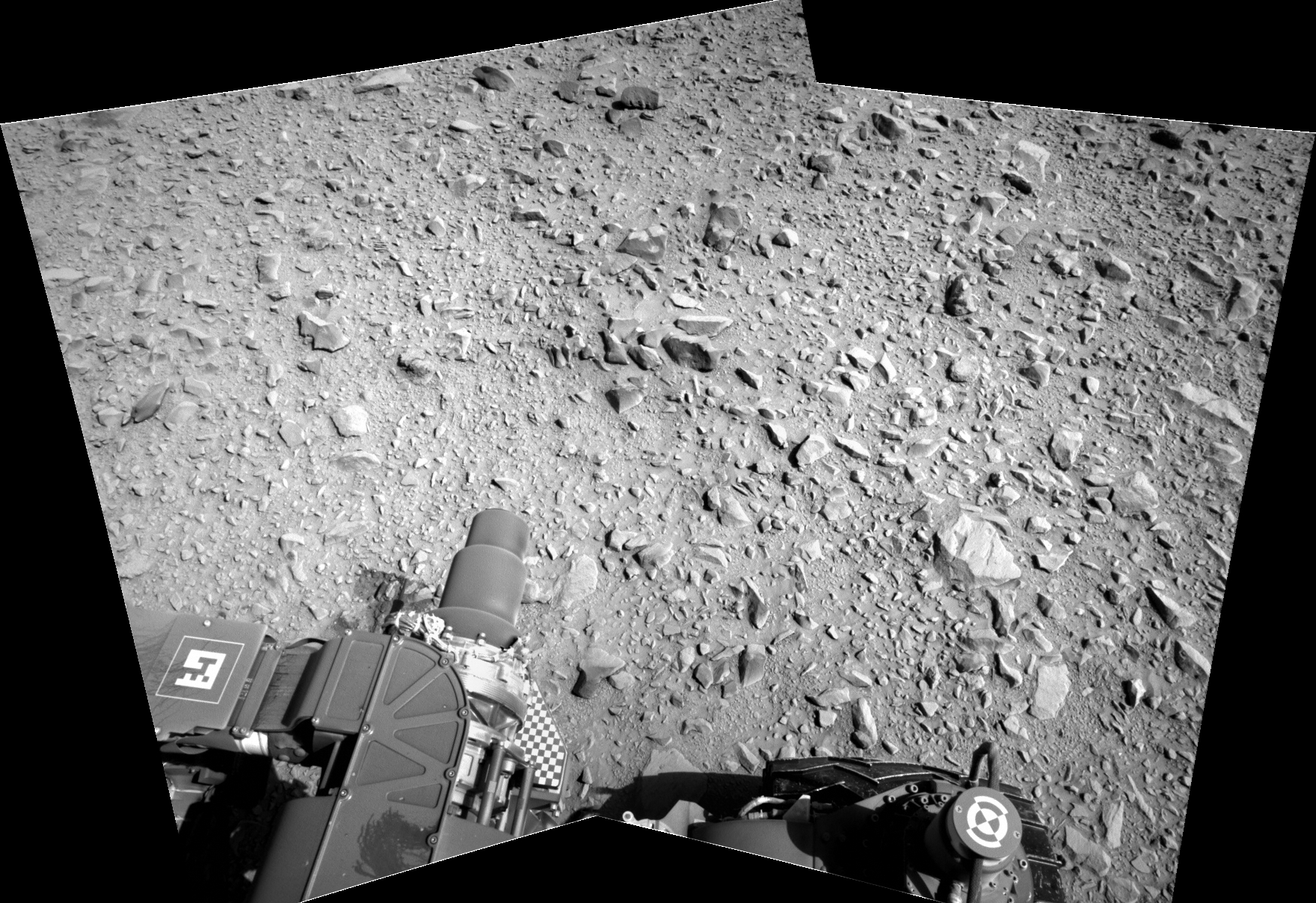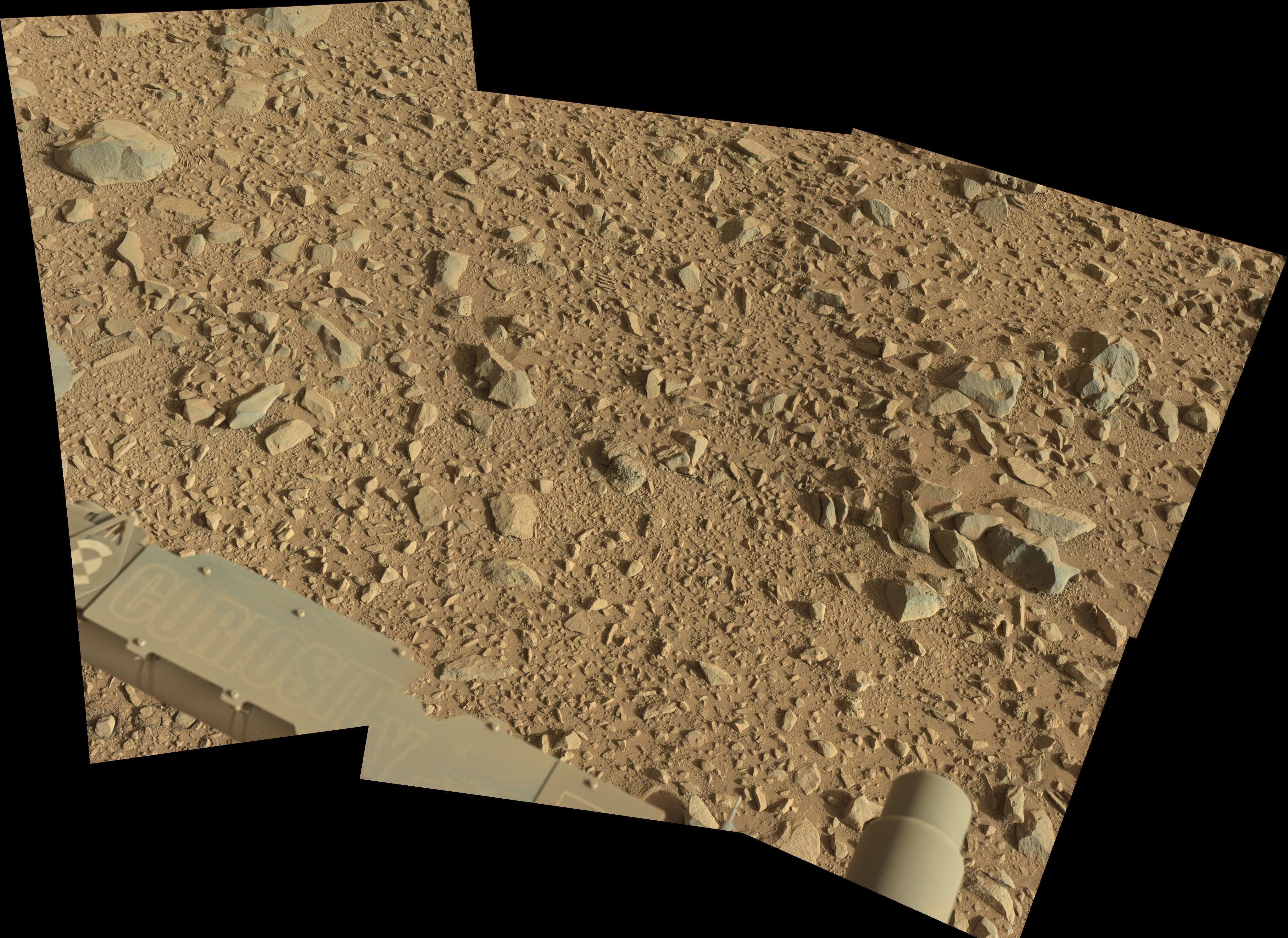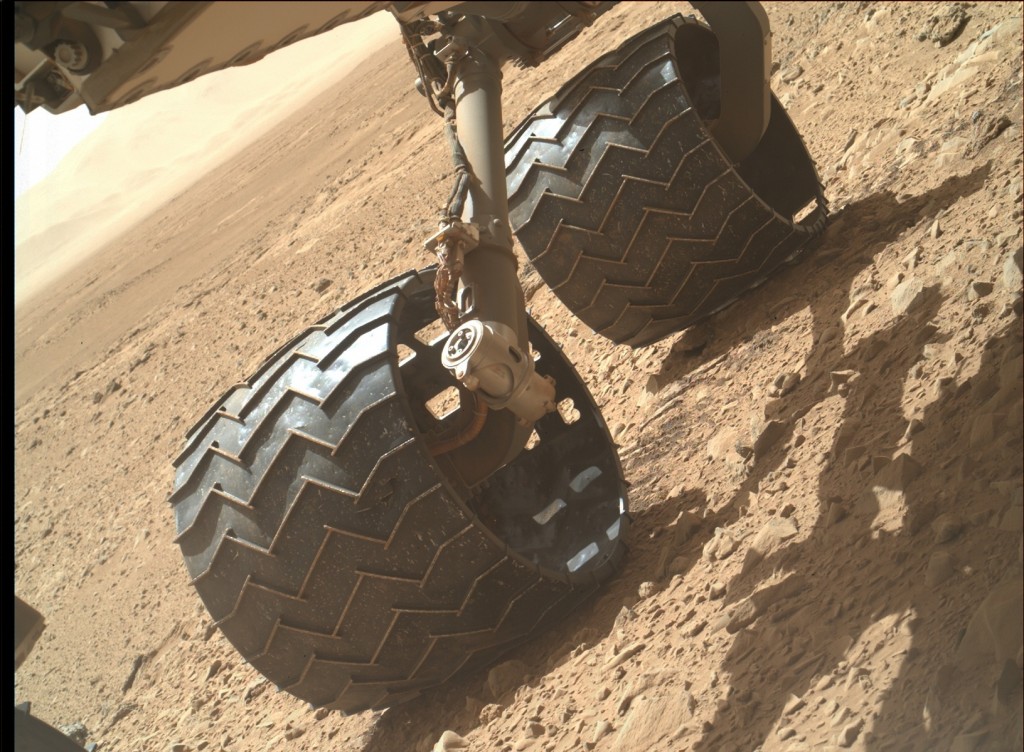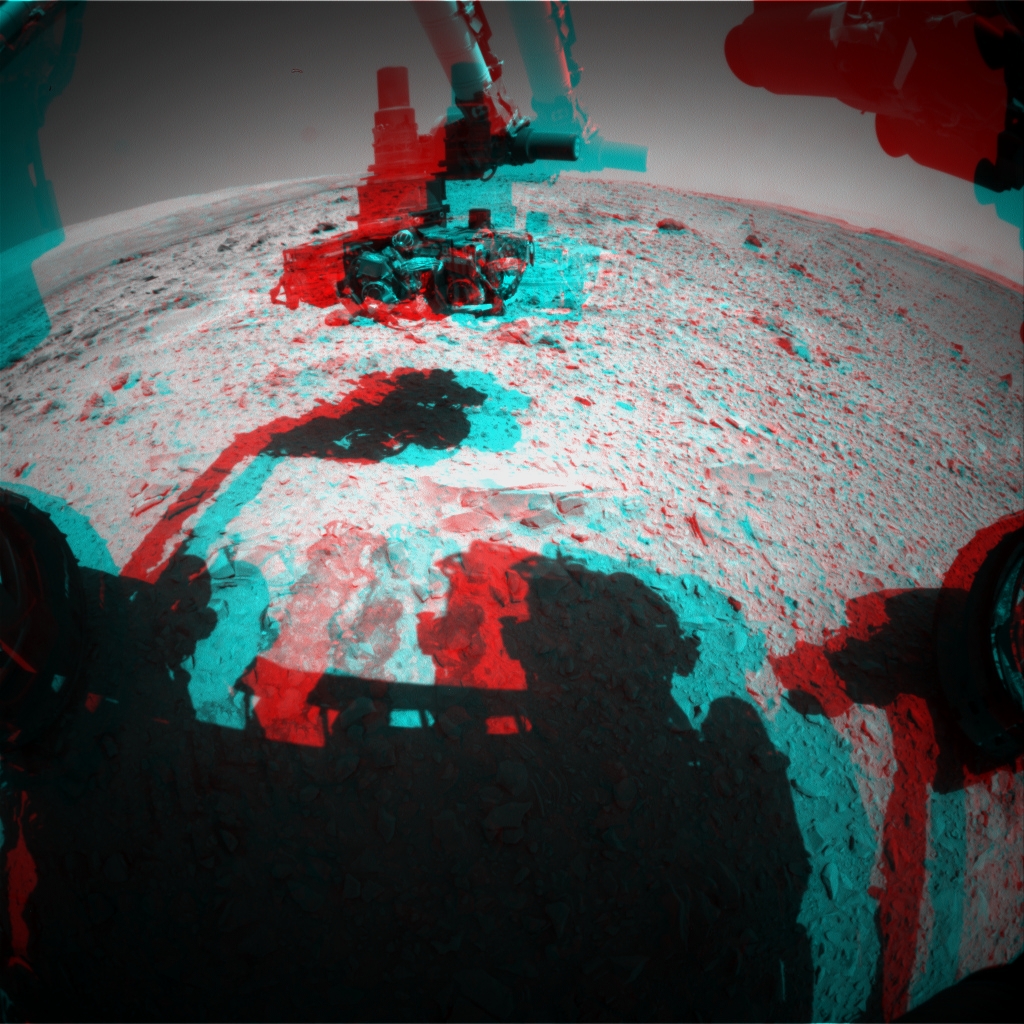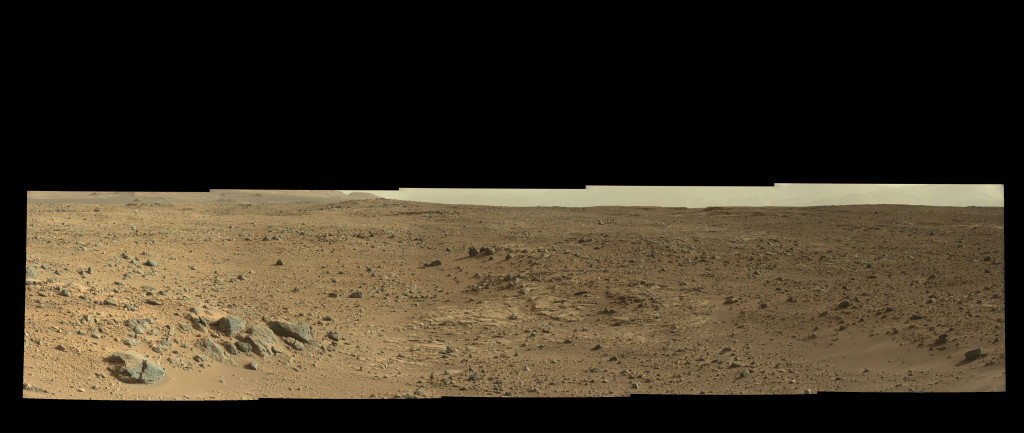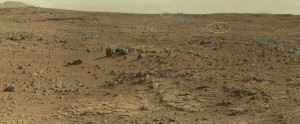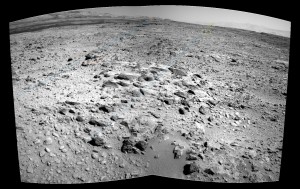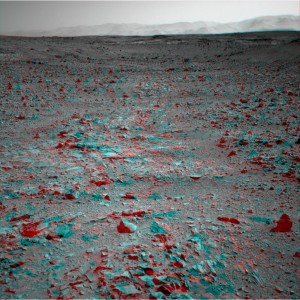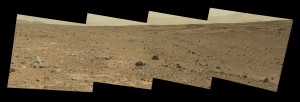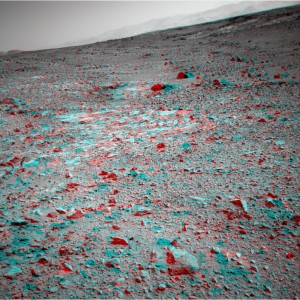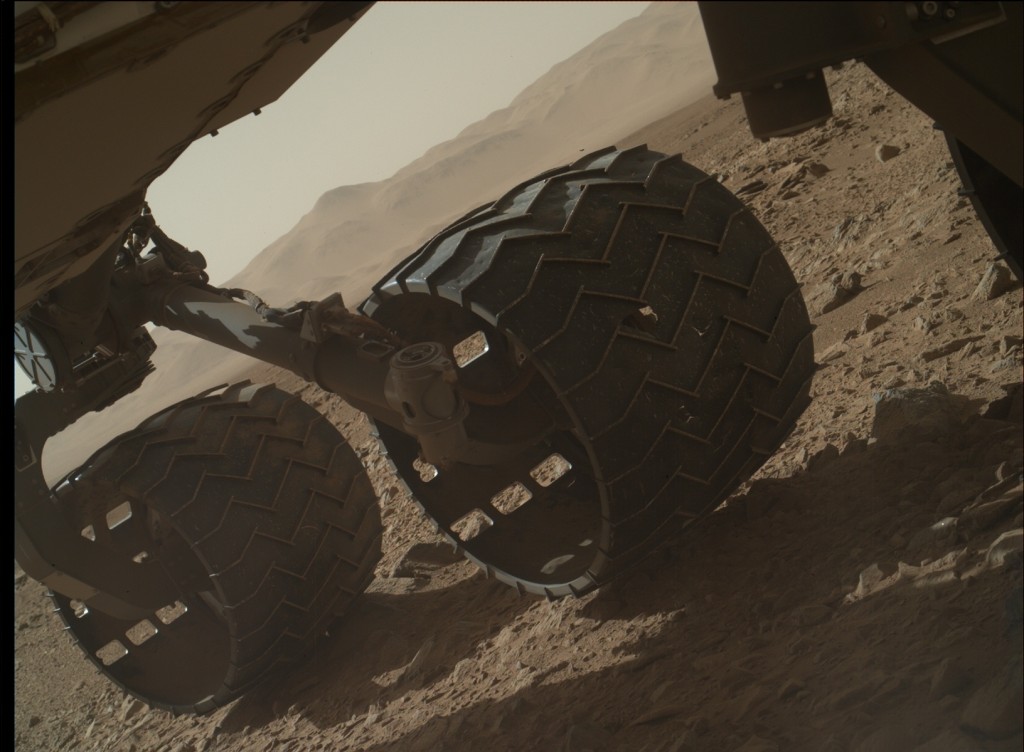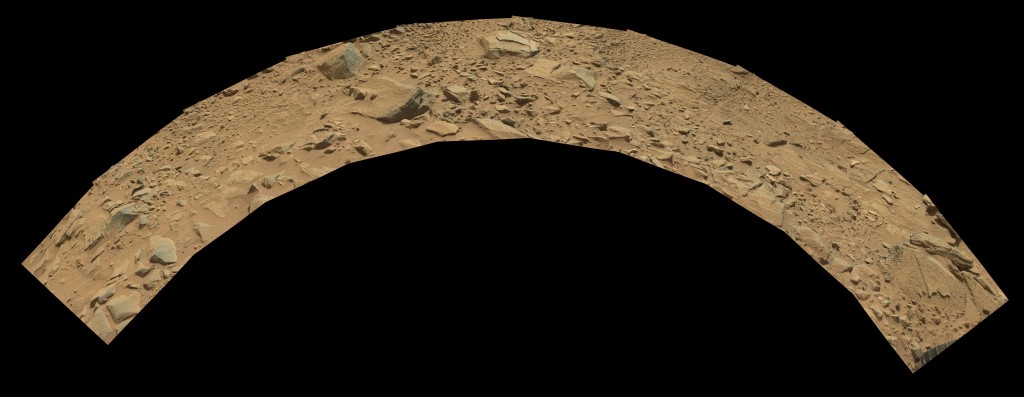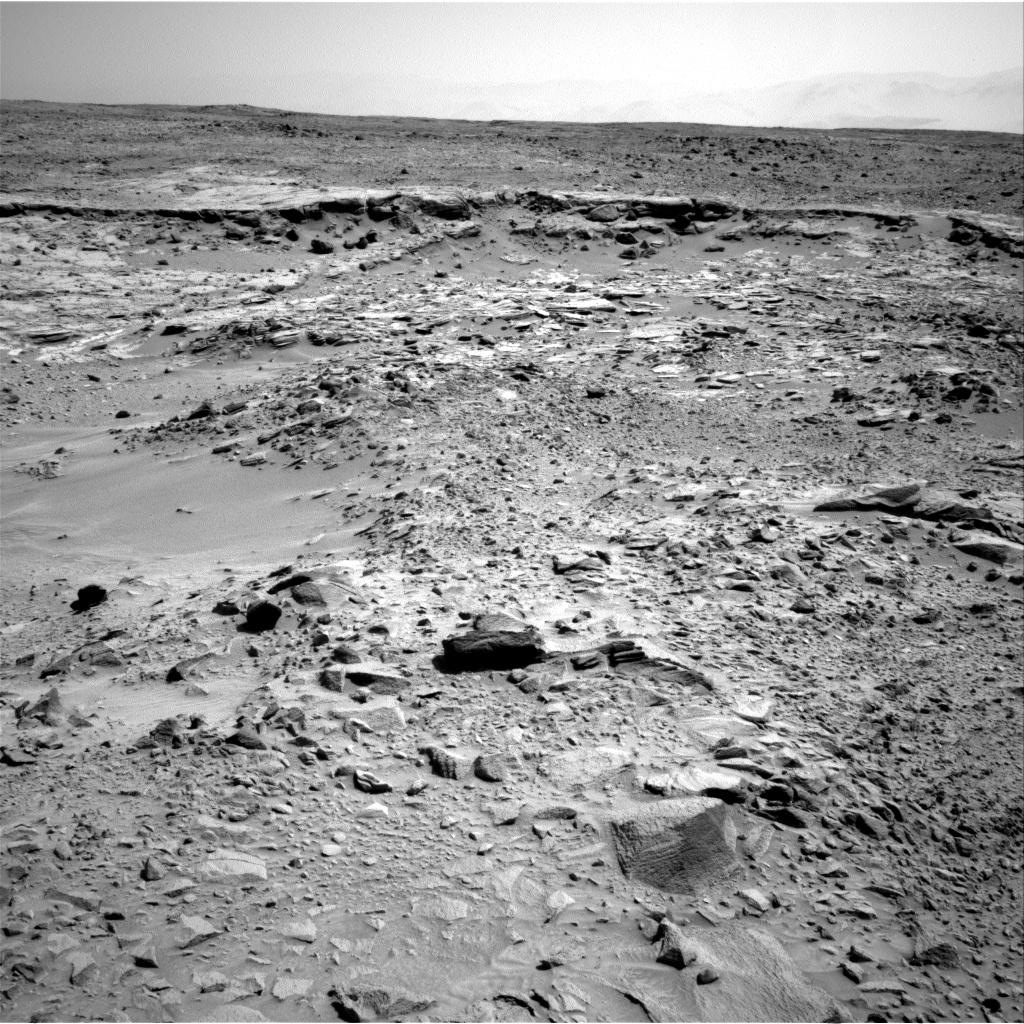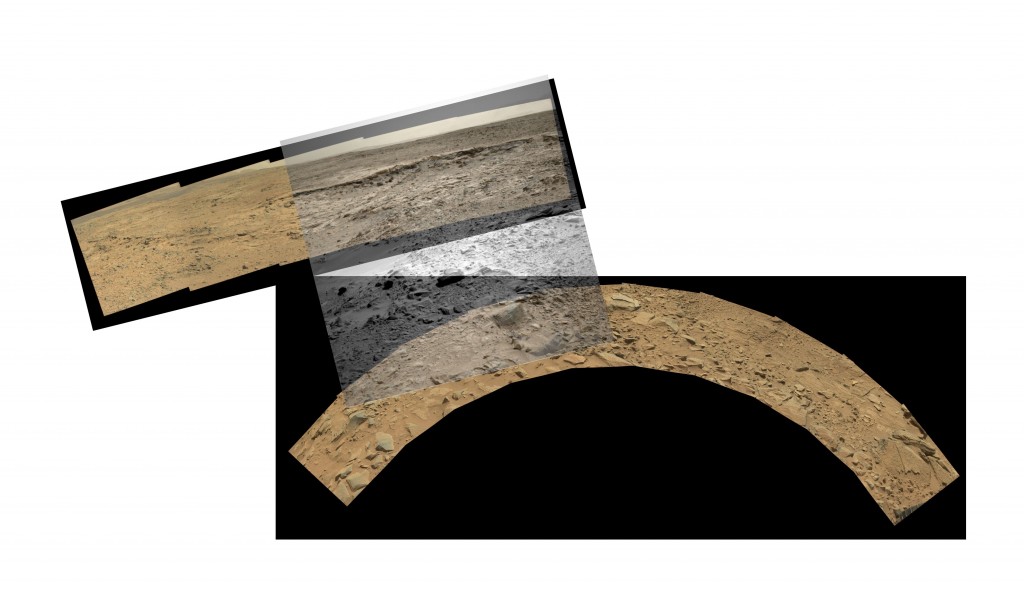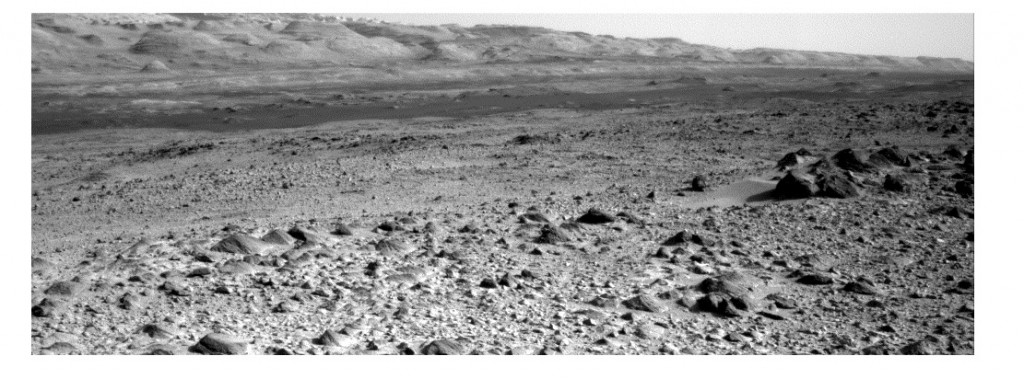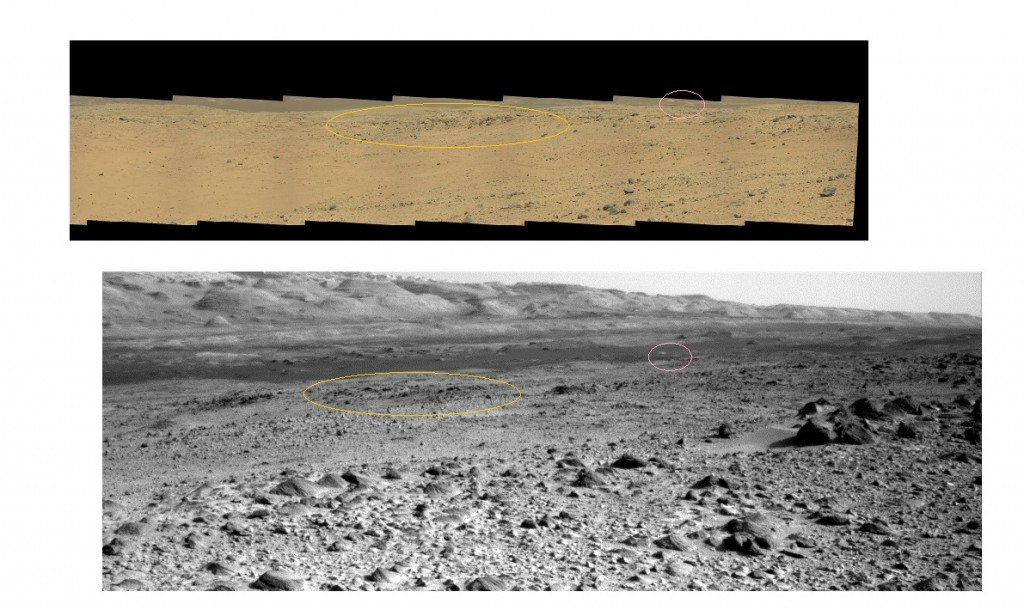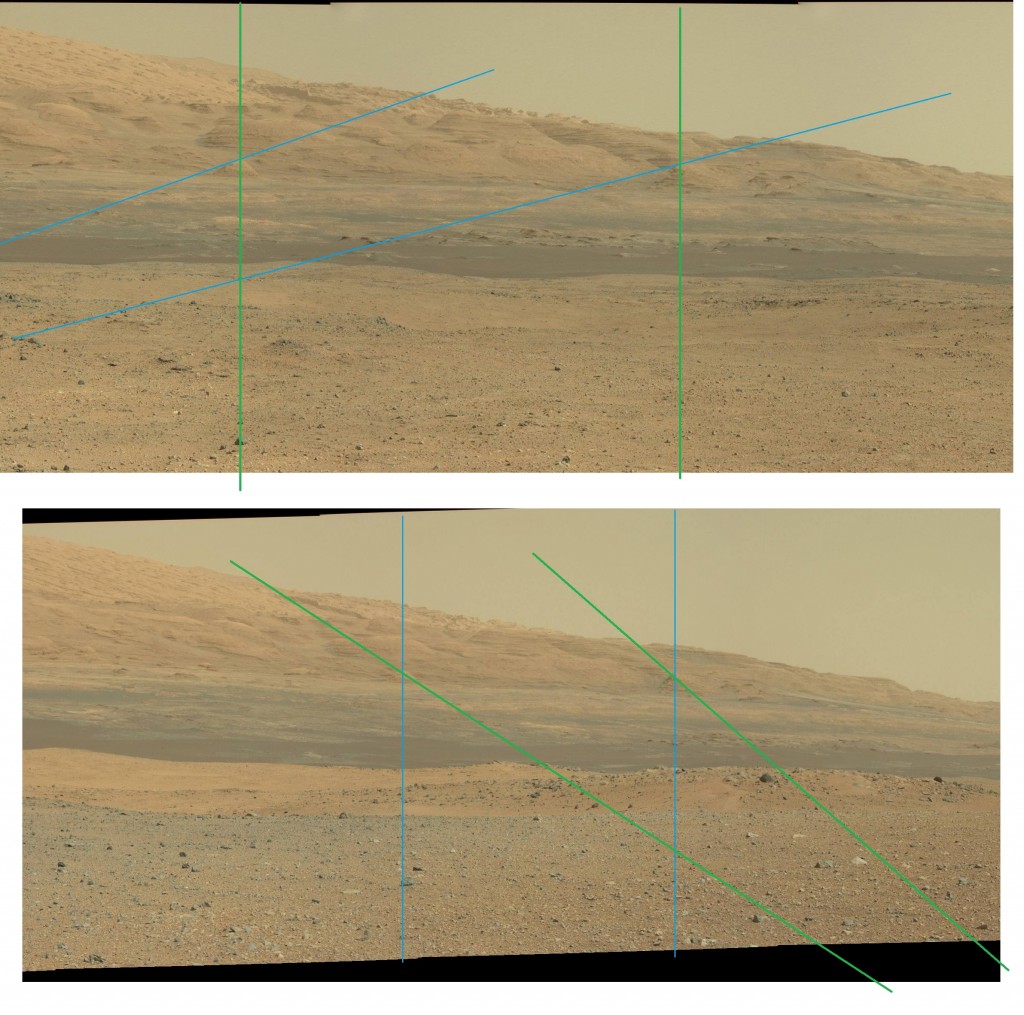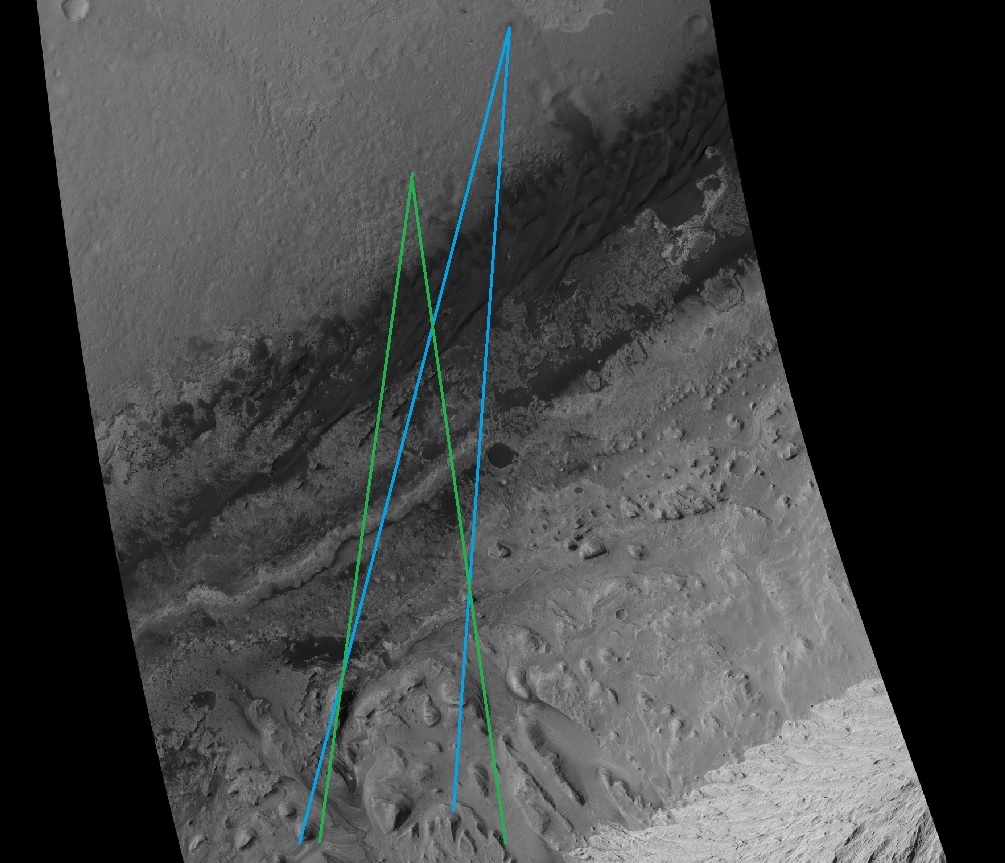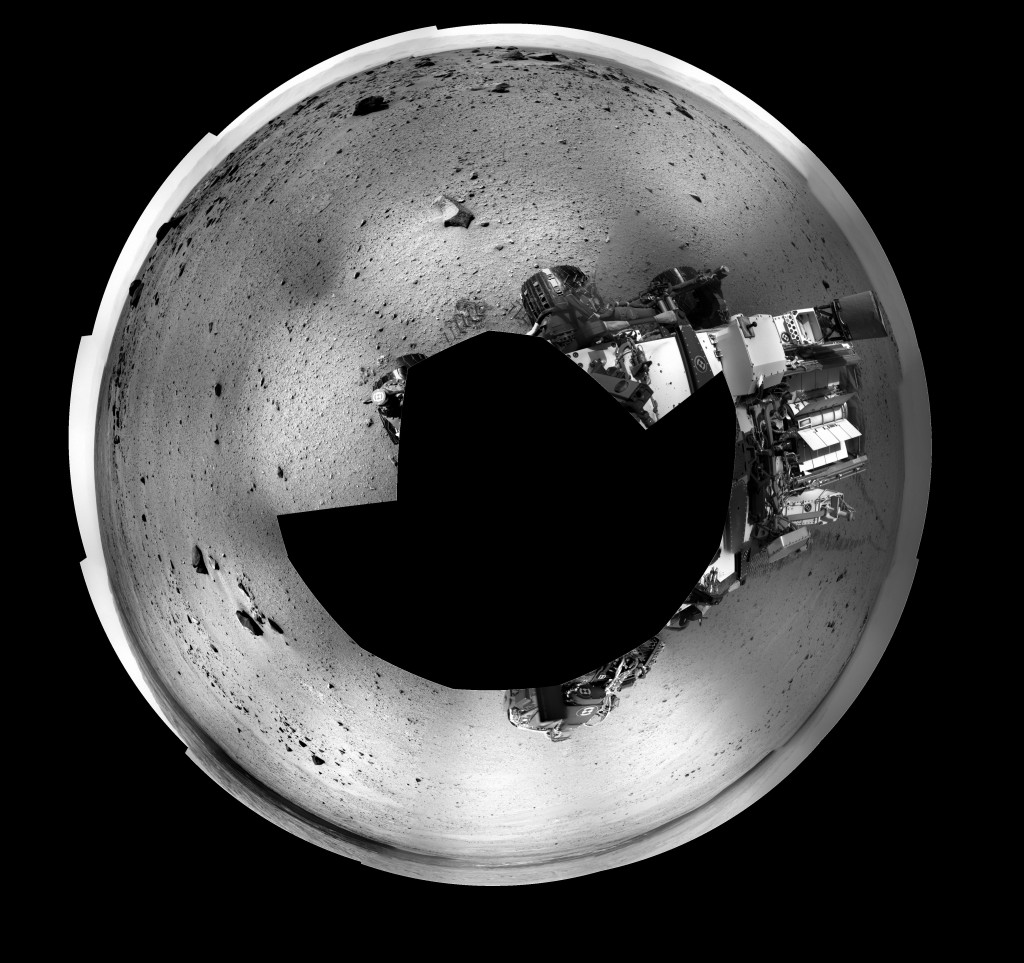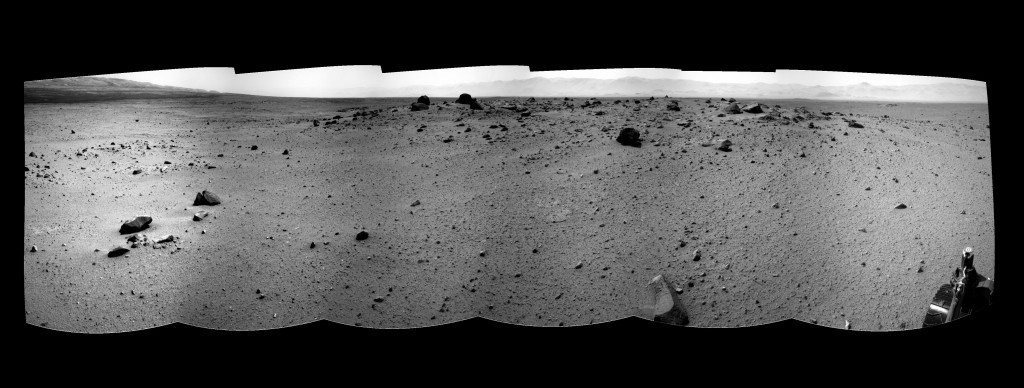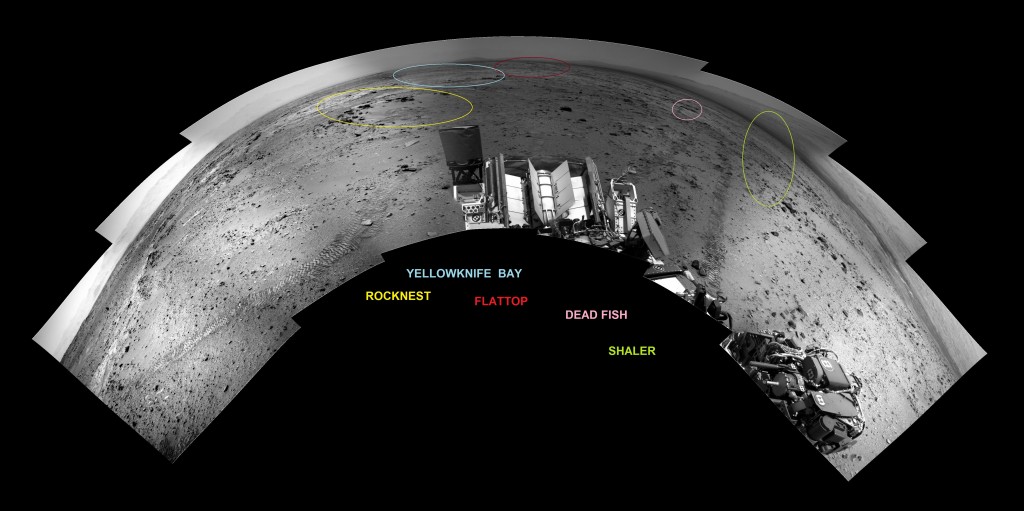Here’s a key to several of the panoramas contained in the sol 508 Mast camera images, based on a sol 508 Navcam panorama ( click to enlarge. )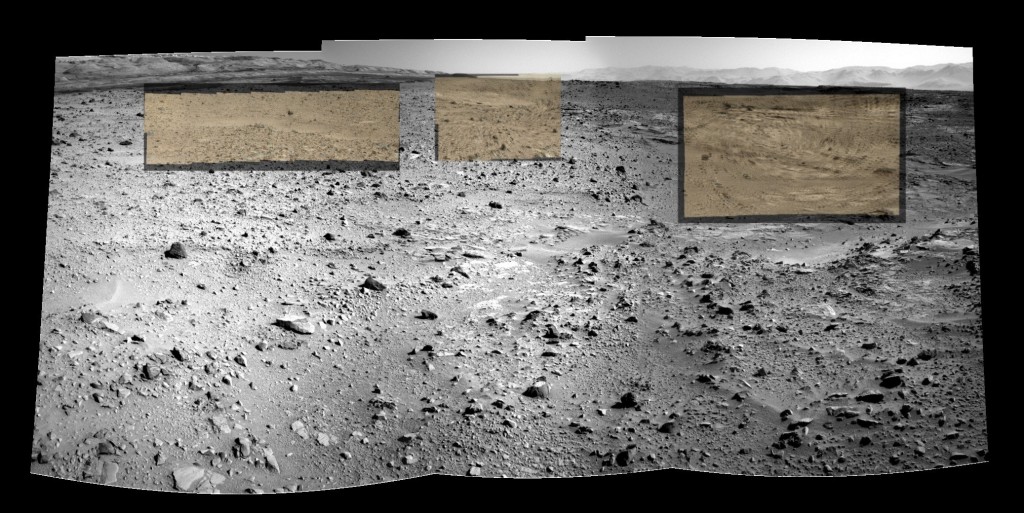
The individual Mastcam panorama’s follow below. Note the swirly moire effect in the overlay I did. This may be taken as a stamp of authenticity due to a slight relative rotation of the images. I just used resizing ( zoom in paint.net ) and “translation”, as it’s called in graphical terms.
The Mastcam panoramas are 7×2, 3×2, and 5×3, comprising 35 images in all. There is another closeup panorama which I plan to cover in another post.
This 7×2 panorama lies along the forward path of Curiosity. There’s been a lot of concern about the beating that Curiosity’s wheels are taking, and I’m thinking that they are doing some extra scouting to try to avoid the worst rocks.
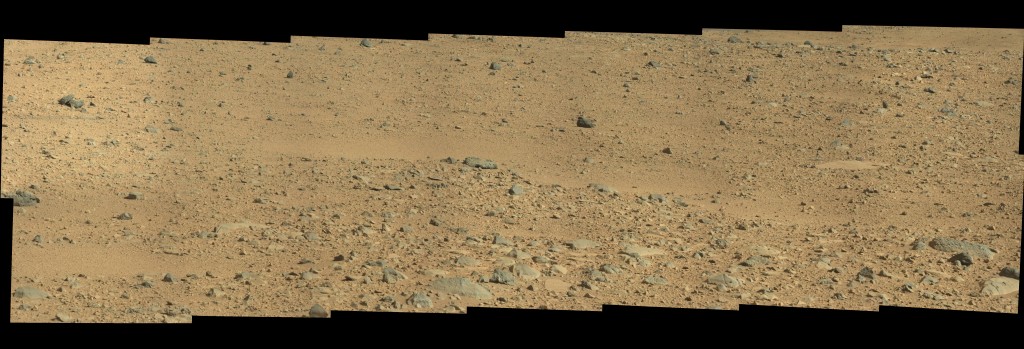
This view shows the close horizon that has been in view for a month now. Note the large rock which has been visible as a “nub” for some time. Curiosity will soon pass it by.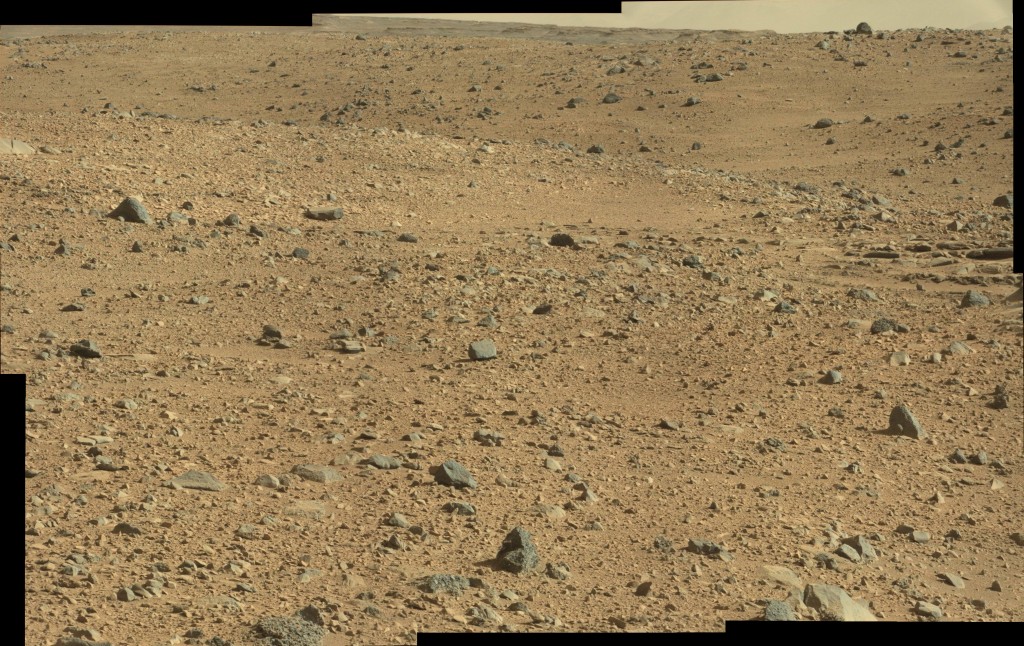
This layered basin is another version of “Shaler” I guess, although this seems to be beautifully sculpted by Aeolus in the shape of a bowl. I think these features change on a time scale of thousands of years or more, and Curiosity is something of a bull in a china shop up there, but how else would we see it?
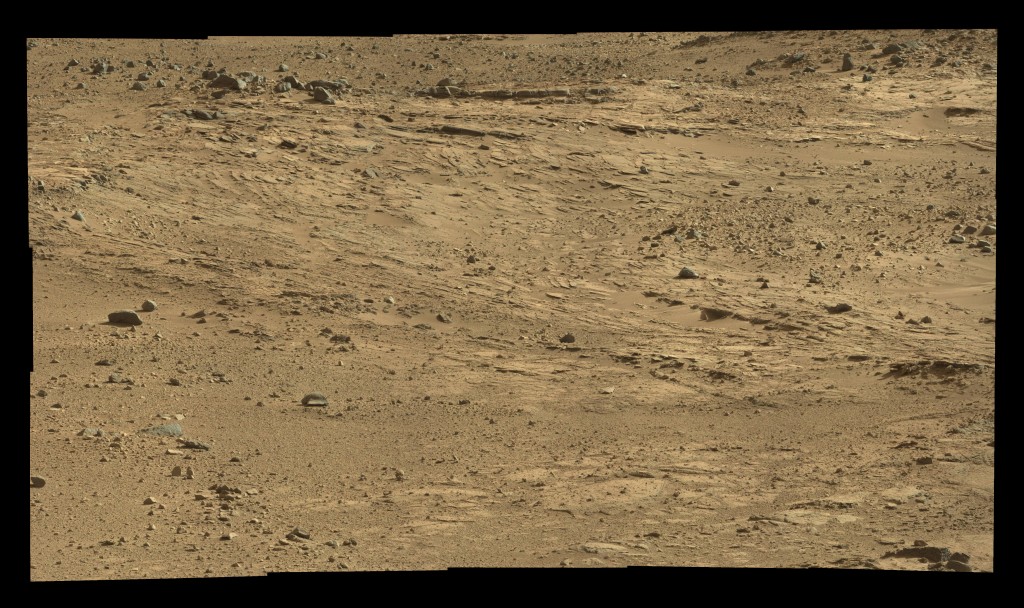

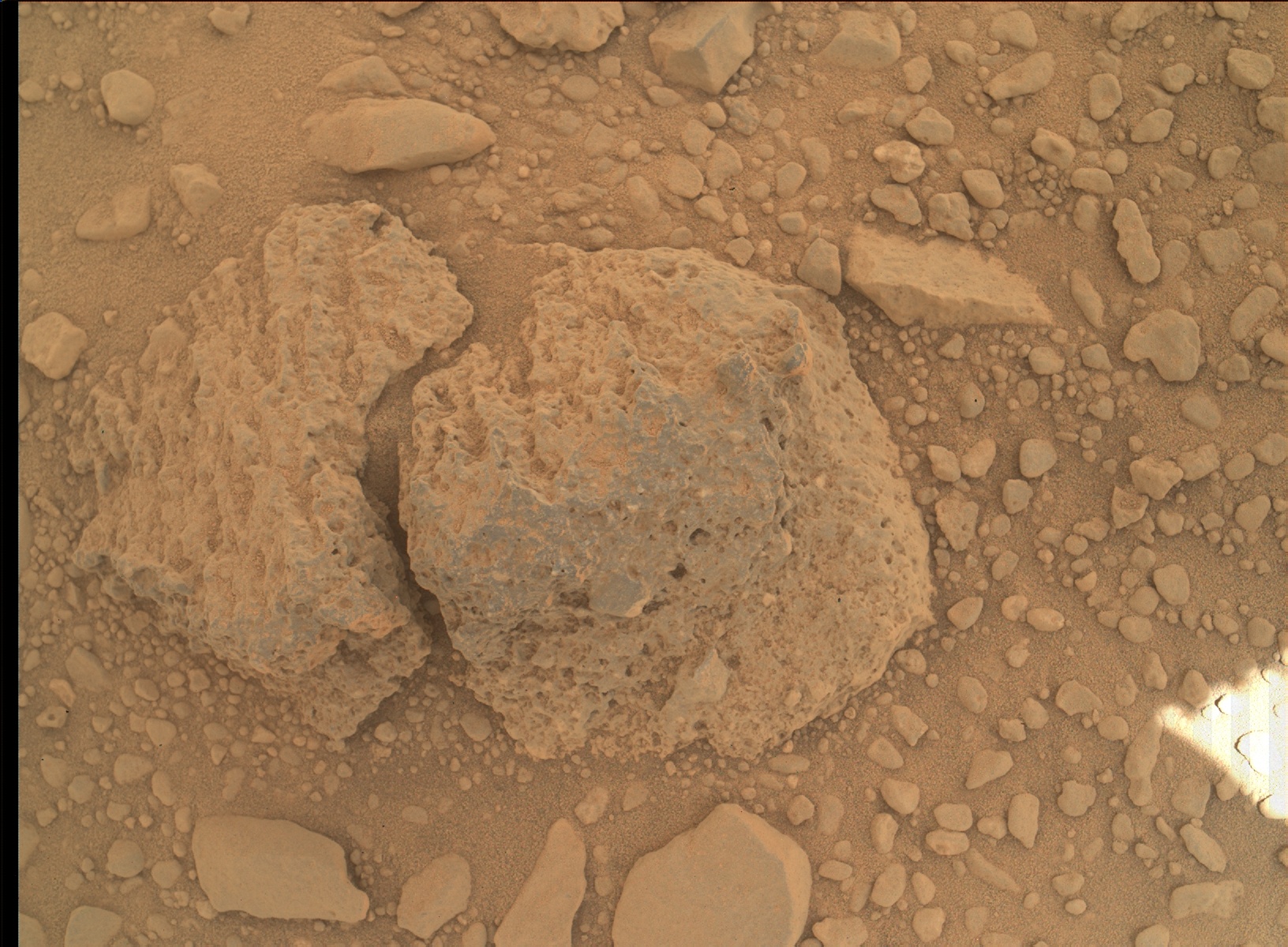 On Sol 506 Curiosity’s MAHLI acquired an image of a rock which had evidently attracted its, ah, curiosity.
On Sol 506 Curiosity’s MAHLI acquired an image of a rock which had evidently attracted its, ah, curiosity.